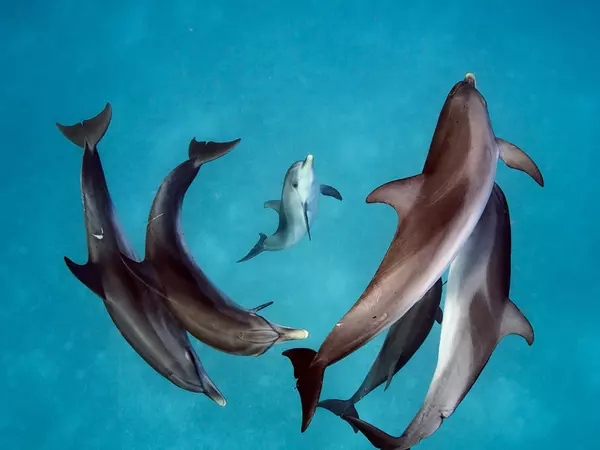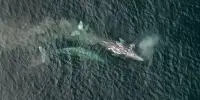During a field trip to Mikura Island in Japan in 2014, marine biologist Vincent Janik clearly recalls observing a pod of dolphins play with seagrass. “They were wrapping the seagrass around their fins and flippers and passing it on for other dolphins to take up,” Janik, the head of the Scottish Ocean Institute in the UK, told Mashable.
Most animals, including humans, enjoy playing. However, play among dolphins and other marine mammals appears to be particularly noteworthy. Dolphins are insatiably curious creatures, which motivates them to seek stimulation and activity. Furthermore, the facial morphology of a dolphin gives the impression that it is smiling, and they do notable playful activities such as somersaults and leaping around vessels.
“Why do dolphins play?” might seem like a simple question. But it’s hard to identify the reasons, say marine researchers. What looks like play to humans might be more than just fun to dolphins.
Playing is not always what it seems
According to Holli Eskelinen, a dolphin researcher and lecturer at the University of Miami Rosenstiel School of Marine and Atmospheric Science, the maximum amount of brain growth in animals occurs during play.
Eskelinen once saw a dolphin calf playing with a stick in its jaws. After a few months, she discovered that the dolphin had learnt to control and move mangrove seed pods with the identical stick action. As the dolphins mature, play provides a chance for them to discover what they’re capable of and to engage their brains.
What we observe might be anecdotally classified as play, but it could serve a bigger biological purpose. We can often get them to play hide and seek and peekaboo kinds of games.
Holli Eskelinen
“What we observe might be anecdotally classified as play, but it could serve a bigger biological purpose,” Eskelinen told Mashable.
Though play is a habit shared by many terrestrial and aquatic creatures, dolphins’ curious nature, according to Janik, may distinguish their play behavior from that of other animals. Dolphins, for example, are captivated when they come across puffer fish, an intriguing organism that inflate itself up like a ball to avoid predators. Dolphins, on the other hand, hunt these fish and sometimes play catch by passing them back and forth.
According to a BBC program, a poison emitted by puffer fish intoxicates dolphins. However, that is only a theory. According to Heather Hill, who studies dolphin behavior and teaches psychology at St. Mary’s University in Texas, there isn’t nearly enough evidence to support the intoxication theory. “I think puffers are just another kind of interesting thing for dolphins to mess with,” she said.

For dolphins, play starts young. By playing, dolphin calves learn to interact with other members of their pod. It helps them understand the emotional state of other dolphins. They begin playing just days after birth, when mothers nurse their young. This, surprisingly, often involves the genitalia, explained Hill. The mother, with its rostrum or mouth, basically gooses its calves. The calves appear to find that pleasurable, Hill said.
In captive conditions, such as zoos, there are many opportunities to watch dolphins flip and play with objects. Dolphins, being social mammals, get along well with humans in these environments, said Hill. “We can often get them to play hide and seek and peekaboo kinds of games,” she said. Wild dolphins, though they don’t have the same toys, have similar play behaviors. But these free dolphins must spend more time foraging and hunting, meaning they have less time to play.
Sometimes dolphins, be it captive or wild, do seem to play just to have fun and perhaps relax, said the Scottish Ocean Institute’s Janik. Dolphins play an unusual game, creating bubble rings in the water that last for about a minute. They do this by exhaling air near the water surface. Then, they destroy those bubbles by biting or just swimming through them.
However, distinguishing between a play battle and a genuine fight in dolphins gets difficult, according to Janik. The physical actions we see in play can also be seen when dolphins conflict or become violent. When animals, such as dogs or wolves, convey non-serious play signals, it’s quite evident, according to Janik. “However, this is not the case with most marine creatures,” he told Mashable.
Overall, Eskelinen emphasizes that there is still much to learn about dolphin play and behavior. She recalls once seeing a mother swimming around its dead calf for an extended amount of time and wonders what use it might have served. “There’s a lot of questions that still need to be answered and connected for us to understand,” Eskelinen said.
















